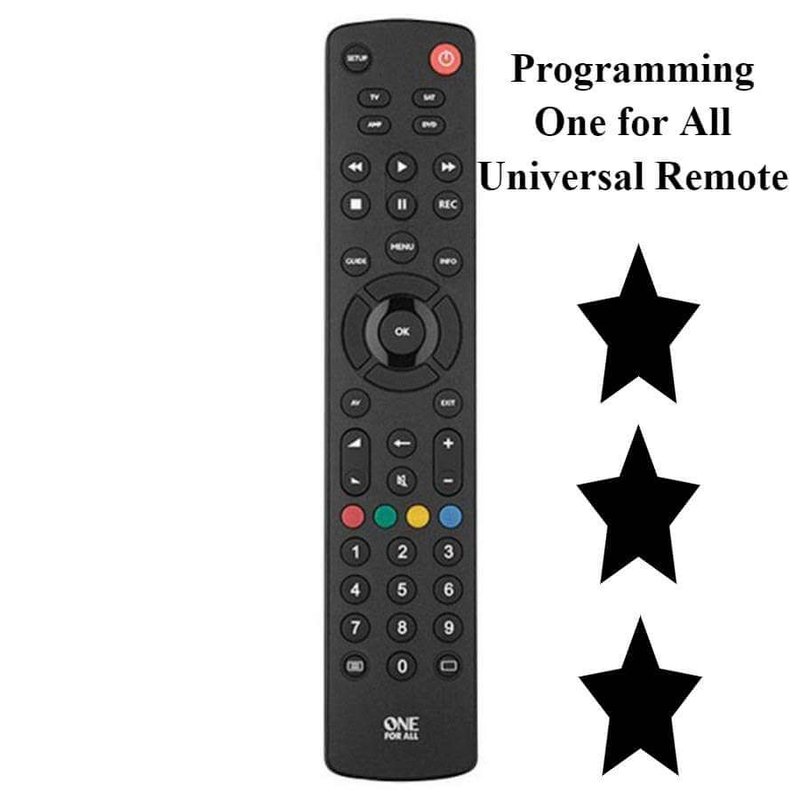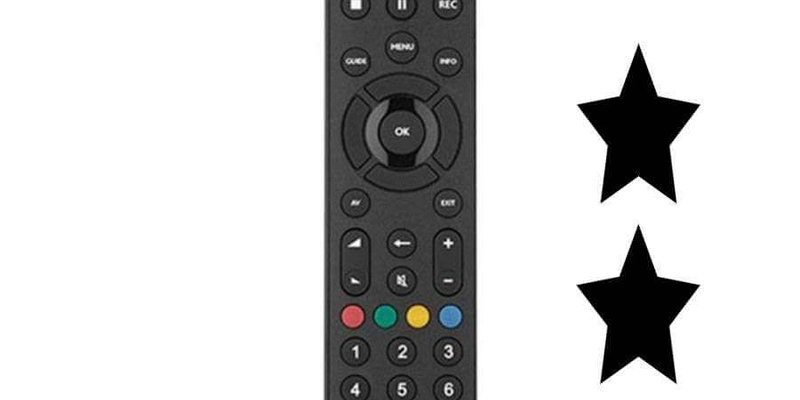
If you’re staring at your DVD player and your shiny One For All remote, wondering, “Can this thing actually control my old DVD player?”, you’re definitely not alone. The idea behind these remotes is pretty simple: one device to rule them all. But does it really work? Let’s unravel the truth about syncing a One For All universal remote to a DVD player, without sending you down a techie rabbit hole.
What Makes a Universal Remote ‘Universal’?
Let’s clear up some magic behind the curtain. Universal remotes—like the One For All—aren’t actually psychic, but they do have a massive library of tiny instructions (called codes) stored inside. These codes are like secret handshakes that different devices understand. So, instead of memorizing 20 languages, your remote learns just the key phrases it needs to “talk” to your DVD player, TV, or soundbar.
Why is this handy? Well, imagine if every light in your house had a different switch and you had to run to each room just to turn them all off at night. Universal remotes lump all those switches together. They’re designed to sync up with most brands and models you’ll find in a living room—especially big names like Sony, Panasonic, LG, or Samsung. The One For All remote is particularly popular because it tries to be as broad as possible with its compatibility. The trick is whether it knows the right code for your specific DVD player.
So, yes, the whole point of a universal remote is to spare you the “remote shuffle.” But let me explain—”universal” doesn’t mean absolutely every device on planet Earth, especially really new, obscure, or ancient tech. Still, for the majority of DVD players out there, you’ve definitely got a shot.
How Does Programming a One For All Remote Work?
You might be wondering how the magic happens. Programming (or “pairing”) your remote isn’t much harder than setting an alarm—if you know the steps. Here’s the thing: the process usually involves entering a special code that matches your DVD player brand. Think of it like tossing a secret password at your player and seeing if it opens the door.
Here’s a basic rundown of what typically happens:
- Step 1: Pop in fresh batteries. I know it sounds basic, but trust me, nothing derails a programming session faster than weak juice.
- Step 2: Find the correct code for your DVD player. You’ll get a little booklet with your One For All remote, and it’s full of codes listed by brand. If you lost it (happens to the best of us), you can check their website.
- Step 3: Hold down the right button (usually “Setup” or “Magic”) until a light blinks. That’s your signal it’s ready to sync.
- Step 4: Enter the code using the remote’s number buttons.
- Step 5: Test it. Try turning the DVD player on, or hitting play. If nothing happens, repeat with the next code on the list!
It’s kind of like cracking a safe or playing a little guessing game. Each code is a possible solution, and you just have to find the one that makes your devices shake hands.
Common Hiccups and Troubleshooting Tips
Programming isn’t always a smooth ride. Sometimes, just as you think you’re about to hit play, nothing happens. Frustrating, I know. But before you hurl the remote across the room, there are a few basics to double-check.
- Batteries: Seriously, check them. Low batteries are sneaky troublemakers.
- Correct Code: Make sure you’re using the right code for your DVD player’s brand and model. Each brand can have several codes to try.
- Remote Reset: If the remote just won’t cooperate, you can reset it. On many models, you hold down the “Magic” button until the light flashes twice, then enter a reset code (often 981 or 977). This wipes everything so you can start fresh.
- Blocked Sensor: Make sure there’s nothing blocking the remote’s infrared sensor and the DVD player itself. Even a glass door can cause problems.
Sometimes all it takes is patience and a fresh start. If things get bumpy, don’t assume it’s broken—sometimes it’s just a tiny detail out of place.
One storytelling moment: I once spent 45 minutes on my friend’s ancient DVD player, only to realize I was aiming the remote at the wrong device! So, yeah, double-check the obvious before you call it quits.
Comparing Universal Remotes to Brand-Specific Remotes
Here’s where it gets interesting. You might be asking, “Why bother with a universal remote when the DVD player came with its own?” Fair question! Here’s the scoop.
Brand-specific remotes are built just for one device. They come with all the buttons perfectly mapped, sometimes even extra features (like direct access to subtitles or special menus). If you lose that remote, though, replacing it with an original can be expensive or downright impossible for older models.
Universal remotes, like the One For All, aren’t quite as tailor-made, but they win on convenience. They let you control multiple devices—TV, DVD, streaming box—all at once. You might lose a fancy shortcut, but you gain control and simplicity. It’s sort of like buying a Swiss Army knife instead of carrying a dozen different tools around.
That said, not every universal remote is equally good at talking to every device. If you have a super-unique or obscure DVD player, the code library might not cover it. But for most standard brands, you’ll be pleasantly surprised at how well it works.
Finding and Using Codes for Your DVD Player
Now for the nerdy bit (don’t worry, I’ll keep it simple). The heart of programming lies in finding the right code. Each DVD player brand has a set of numbers—codes—that tell the remote how to behave.
You’ll usually find a big table in the remote’s manual, or you can check the One For All website. Sometimes you need to try more than one code for the same brand, since not every model is exactly the same inside.
Pro tip: Write down the code that finally works! If you ever have to reset or change batteries, you’ll thank yourself later.
Some remotes even have a manual search feature. You hold down a button, and the remote cycles through codes until your DVD player responds. It takes time, but it almost always finds a match eventually.
And if you’re really stuck, there’s always the “learning” function. Some advanced universal remotes can actually copy signals from your original DVD remote—like a parrot learning new words. Just point them at each other and follow the prompts. It’s kind of sci-fi, honestly.
Limitations: When Programming Might Not Work
Here’s the honest truth: Sometimes, universal remotes can’t save the day. If your DVD player is extremely old, or from a super niche brand, the right code may not exist in the remote’s memory bank. Or, if your DVD player uses radio frequency (RF) instead of standard infrared (IR), you’re out of luck—universal remotes almost always work with IR.
Another potential snag is advanced features. Maybe your player has a button for karaoke mode (do people still use those?) or picture-in-picture. The One For All remote will likely cover basic stuff: power, play, pause, stop, menu navigation. But those unique bells and whistles? They sometimes stay locked behind the original remote.
Lastly, if your DVD remote is broken completely and you can’t use the learning function (because, well, there’s nothing to learn from), you’ll have to stick to the code method and hope for the best.
Alternatives If All Else Fails
Okay, so you’ve tried all the codes, reset the remote, checked the batteries twice, and nothing works. Don’t worry, you’re not doomed to a life of lost remotes. Here are a few backup plans:
- Replacement Remotes: Many online shops sell cheap replacement remotes programmed to work with specific DVD models.
- Universal Remote Apps: If your DVD player is newer and supports Wi-Fi or Bluetooth (rare for most), some apps can control them via your phone.
- Learning Remotes: Advanced remotes that can “learn” from any working remote, if you have access to the original—even if it’s a bit finicky.
- Manual Buttons: Remember those physical buttons right on your DVD player? Not glamorous, but gets the job done in a pinch.
In my experience, most people do manage to sync their One For All remote with their DVD player—it just takes a sprinkle of patience and the right code.
The Takeaway: Is the One For All Remote Worth Trying With Your DVD Player?
So, circling back—can you program a One For All universal remote to a DVD player? In most cases, yes. It’s designed exactly for this kind of thing. It turns remote chaos into something much easier to handle, especially if you’re tired of digging through couch cushions looking for the “right” remote every night.
Remember, all you need is the right code, some patience, and maybe a little luck. You won’t always get every fancy feature, but you’ll almost always get the basics: power, play, eject, and navigation. And in the real world, isn’t that 95% of what you need, anyway?
If you ever get stuck, double-check the code, reset if needed, and make sure nothing’s blocking the sensor. And hey, don’t be afraid to ask for help or try a backup plan. Life’s too short to let a stubborn remote get in the way of your movie night. Happy syncing!
